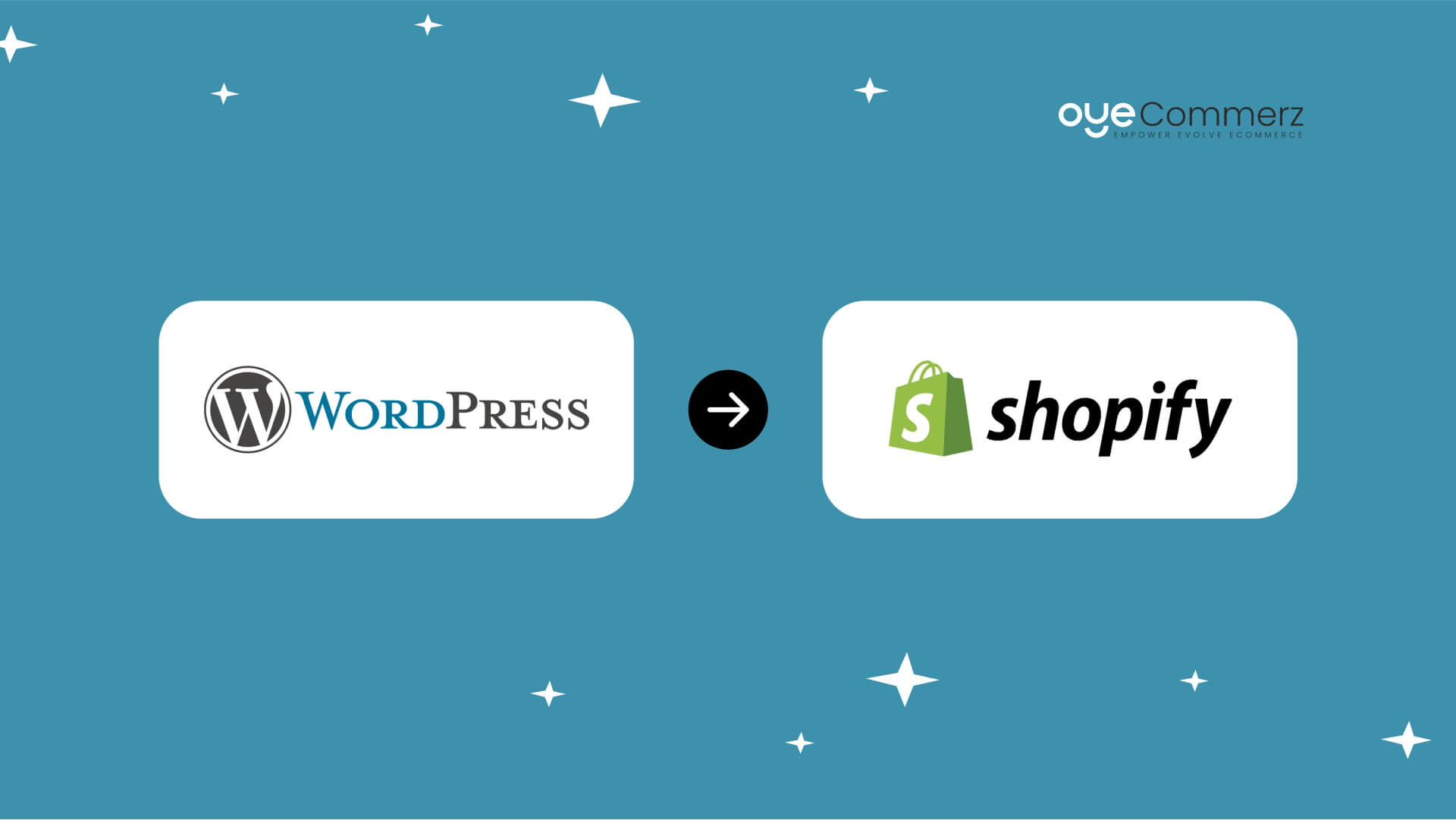Shifting from WP to Shopify marks an exciting step in optimizing your online store operations. As companies expand, choosing a solution that aligns with scalability, UX, and customization is essential. Shopify has emerged as a preferred choice for online merchants, providing unmatched adaptability, security, and ease of use. In this guide, we will delve into why this migration is a game-changer, highlight the benefits, and share actionable steps to ensure a seamless transition.
1. Why Migrate from WordPress to Shopify?
The combination of WordPress and WooCommerce, has served countless online stores. However, as businesses expand, challenges like plugin dependency, data risks, and technical complexities can hinder progress. Shopify, designed explicitly for e-commerce, addresses these concerns with an all-in-one, user-friendly platform. Real data supports this transition—Shopify hosts over 4.4 million websites globally, with a documented 10% boost to sales conversion rates for many businesses post-switch.
2. Shopify's Advantages for Thriving Online Stores
Shopify’s powerful platform is tailored for expanding businesses. Its notable benefits are:
- Seamless Customization: Shopify provides over 80 expertly crafted themes.
- Integrated Tools: Capabilities such as Shopify Payments and built-in SEO streamline operations.
- Global Reach: Currency versatility and regional customization empower brands to expand internationally.
Additionally, Shopify delivers an uptime rate of 99.98%, guaranteeing your website is always operational.
3. Getting Ready for Your WordPress-to-Shopify Transition
Before migrating, evaluate your current store. Review product data, customer details, and SEO performance. Resources such as Shopify’s Migration Kit or third-party solutions help ease the transition. Create a comprehensive plan, making sure all assets—item details, images, and blog content—are ready for seamless import.
4. Data Migration: A Critical Step
Transferring your data forms the foundation for a successful transition. When migrating from WP to Shopify, prioritize:
- Inventory Details: SKU, descriptions, and groupings.
- Customer Data: Emails, purchase records, and preferences.
- Search Engine Considerations: Preserve meta tags, URLs, and forwarding paths to maintain search rankings.
Use apps like LitExtension to facilitate seamless migration while minimizing errors.
5. Tailoring Your Shopify Store to Fit Your Brand
Post-migration, customizing your Shopify store helps it aligns with your brand. Take advantage of Shopify’s drag-and-drop editor to create layouts with ease. Shopify's themes are optimized for all devices, ensuring a Shopify migration case study smooth UX across devices—a key point, since 74% of e-commerce traffic is generated by mobile visitors.
6. How to Protect Your SEO Rankings When Switching Platforms
Search engine optimization is crucial for maintaining your visibility during migration. Shopify is highly optimized for search engines with organized link formatting, preloaded features, and smooth content management. Make sure you:
- Set up URL forwarding for old URLs.
- Optimize new pages with targeted phrases.
- Use Shopify's apps Plug in SEO to monitor performance after the switch.
7. Post-Migration Testing
Once the migration is complete, run detailed checks.
Check:- Website speed (Shopify boasts faster speeds in contrast with WordPress).
- Payment integration reliability and checkout processes.
- Adaptability across devices.
Testing guarantees your store provides a smooth shopping experience from the start.
8. Real-Life Success Story
One such migration success story is Gymshark, a sportswear company that transitioned to Shopify. Post-migration, the company saw a 60% increase in mobile sales and significantly lowered site downtime. This showcases the potential of Shopify in enhancing e-commerce growth.
9. Overcoming Common Migration Issues
Migration is not without obstacles, such as data integrity and adjusting tailored features. However, Shopify’s robust support and external professionals simplify the process. Partnering with qualified Shopify developers helps guarantee a smooth transition.
10. Starting Your Journey with Shopify
Switching from WP to Shopify marks a forward-thinking approach to online retail. By focusing on growth, simplifying management, and improving buyer satisfaction, Shopify enables companies to thrive in competitive markets.
Final Thoughts
Switching from WordPress to Shopify offers a smart solution that can greatly enhance your e-commerce success. With a robust migration plan, the appropriate E-commerce website migration resources, and professional guidance, you can achieve new growth opportunities.
Ready to make the leap? Reach out today to learn how our Shopify migration services can transform your online store. Contact us now, or consider: Can your business afford to miss out on Shopify’s growth potential?

Comments on “Effortless Transition from WordPress to Shopify: A Comprehensive Roadmap for E-commerce Growth”